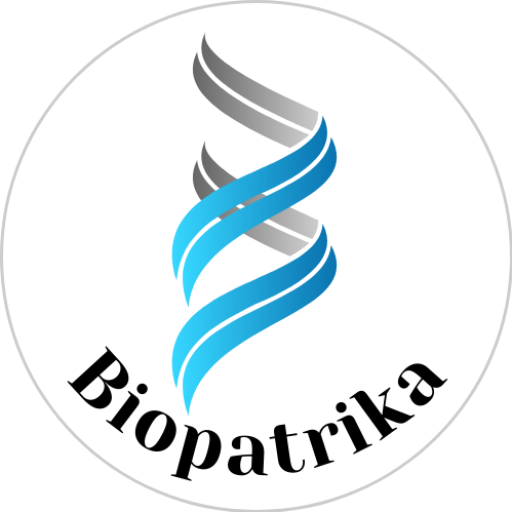Dr. Rajendra Prasad is currently working as an Institute Postdoctoral Fellow and Nanomedicine Investigator in the lab of Prof. Rohit Srivastava at the Department of Biosciences and Bioengineering, Indian Institute of Technology Bombay, Mumbai Powai, India. Dr. Prasad has published a paper entitled “Liposomal nanotheranostics for multimode targeted in vivo bioimaging and near‐infrared light mediated cancer therapy” as a first author in Communications Biology (2020) published by Nature. He has also filed an Indian Patent entitled “Fluorescent gold nanorods and method of preparation thereof”, which has recently been granted (IN350710).
Dr. Rajendra Prasad explained that conventional cancer diagnosis and treatment strategies are still widely practiced today. He emphasized the side-effects of conventional contrast and therapeutic agents, such as poor contrast and image resolution, rapid clearance, non-specific targeting, poor tumor accumulation, heavy and multiple-dose requirements, uncontrolled exposure to high electromagnetic radiation, and whole-body scans. To overcome these limitations, integrated nanosized imaging and therapeutic probes called Nanotheranostics have been conceptualized. These show better efficiency, negligible side-effects, site-selective targeting, and solid tumor regression with minimal dosage, demonstrating potential for clinical translation.
Author Interview
How would you explain your paper’s key results to the non-scientific community?
Even today, traditional diagnostics and treatment strategies for cancer are difficult to replace despite being expensive and time-consuming. These approaches often suffer from non-specific targeting, low image resolution, high dosage requirements, exposure to high-powered electromagnetic radiation, rapid clearance, and potential toxicity. Nanotheranostics have been proposed to overcome these challenges by combining diagnostics and therapy in a single nanosystem. Our study presents a clinically relevant nanotheranostic agent that enables both imaging and therapy. Specifically, we engineered multi-contrast agents—radiocontrast gold nanoparticles and red-emissive quantum dots—integrated into liposomal nanohybrids. These are safe and effective for cancer nanomedicine applications, offering tumor visualization, combination therapy, and image-guided regression.
What are the possible consequences of these findings for your research area?
Breast cancer is a major focus of early-stage diagnosis and treatment. We observed a correlation between increasing cancer-related deaths and rising diagnosis and treatment costs. Our research proposes an image-guided, combination therapy approach for solid tumors, using a biocompatible liposomal nanomedicine. A single dose of this nanomedicine was sufficient to eradicate a 100 mm³ tumor in a few days due to the synergistic effects of heat generation and triggered drug release under near-infrared light. As liposome-based nanosystems are already in clinical research, our nanotheranostics offer a promising path for clinical translation.
“[…] We propose a multimode-image guided combination therapy of solid tumor using biodegradable safe nanotheranostics agent.”
What was the exciting moment (eureka moment) during your research?
The whole research project was exciting, but engineering a functional nanotheranostic agent for image-guided cancer therapy was particularly challenging. The in vivo studies showed significant tumor reduction with our nanomedicine, supporting its clinical potential. That moment inspired me to further explore the design of safe and effective theranostic agents for cancer treatment.
What do you hope to do next?
We now have strong pre-clinical data. The next step is translating this nanomedicine into clinical trials for real-world application.
Where do you seek scientific inspiration?
My visit to a cancer hospital in North India had a lasting impact. The dire condition of patients and the lack of early-stage diagnosis and treatment made it clear to me that I wanted to work in cancer diagnostics and therapeutics.
How do you intend to help Indian science improve?
India has excellent scientists and advanced technologies. However, we lack world-class facilities for early-stage cancer diagnosis and clinical translation. I believe collaborative research is essential. I’m working in a multidisciplinary team involving radiologists, oncologists, engineers, material scientists, and biologists to enhance pre-clinical and clinical research outcomes.
Reference
Prasad R, Jain N, Gorain M, Chauhan D S, Yadav A S, Conde J, Thakor A S, Kundu G, Srivastava R. Liposomal nanotheranostics for multimode targeted in vivo bioimaging and near‐infrared light mediated cancer therapy. Communications Biology, 2020, 3, 284.
Indian Patent IN350710 entitled “Fluorescent gold nanorods and method of preparation thereof.” Application number: 201821022488.
Learn more about Prof. Rohit Srivastava’s lab research: https://www.nanobioslab.com/
Explore more
🎤 Career – Real career stories and job profiles of life science professionals. Discover current opportunities for students and researchers.
💼 Jobs – The latest job openings and internship alerts across academia and industry.
📢 Advertise with BioPatrika – Reach the Right Audience, Fast!
🛠️ Services – Regulatory support, patent filing assistance, and career consulting services.




